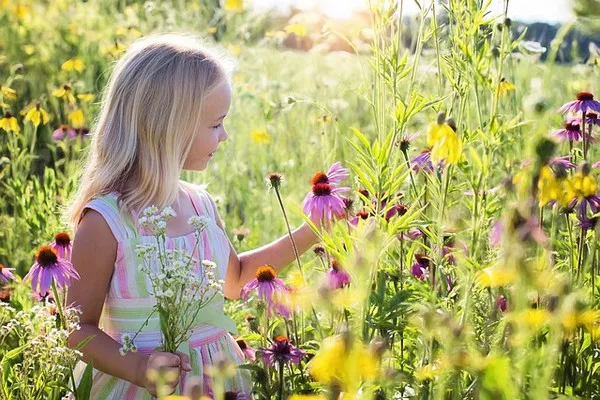Birthdays are a time of celebration, reflection, and joy. But did you know that each month is associated with a unique birth flower, adding a touch of personalized significance to your special day? Birth flowers, like birthstones, are a beautiful tradition that connects individuals to the natural world and carries symbolic meanings. In this comprehensive guide, we will explore the captivating world of birth flowers, shedding light on their origins, symbolism, and how they offer a meaningful and personal connection to nature. So, let’s embark on this journey to discover the floral wonders that represent each birth month.
The Origins and History of Birth Flowers
The tradition of birth flowers can be traced back to ancient civilizations, where flowers were linked to astrological signs, planetary influences, and symbolic meanings. In the 18th century, the language of flowers, known as floriography, flourished, allowing individuals to communicate emotions and sentiments through carefully chosen blooms. Over time, birth flowers became associated with each month, reflecting the changing seasons and the unique characteristics of individuals born during specific times of the year.
As societies evolved, the concept of birth flowers gained popularity worldwide, with each culture adding its distinct interpretations and associations. Today, birth flowers continue to be cherished as meaningful gifts and thoughtful tokens of appreciation.
The Symbolism and Meaning of Birth Flowers
Each birth flower carries its own unique symbolism and significance, reflecting the qualities and traits attributed to individuals born in that month. For instance:
1. January Birth Flower: Carnation – Symbolizes love, fascination, and admiration. Its delicate appearance belies its resilience, representing the ability to overcome challenges.
2. February Birth Flower: Violet – Represents modesty, virtue, and faithfulness. Violets are admired for their beauty and simplicity, symbolizing deep connections and loyalty.
3. March Birth Flower: Daffodil – Signifies rebirth and new beginnings. The bright yellow blooms herald the arrival of spring, embodying hope and optimism.
4. April Birth Flower: Daisy – Symbolizes innocence, purity, and gentleness. Daisies are known for their cheerful appearance and the joy they bring to others.
5. May Birth Flower: Lily of the Valley – Represents humility, sweetness, and happiness. The delicate white bell-shaped flowers evoke a sense of grace and elegance.
6. June Birth Flower: Rose – Symbolizes love, passion, and beauty. Roses are treasured for their diverse colors and are considered the ultimate expression of affection.
7. July Birth Flower: Larkspur – Represents levity, lightness, and positivity. Larkspurs symbolize an open heart and the enjoyment of life’s simple pleasures.
8. August Birth Flower: Gladiolus – Signifies strength, integrity, and moral character. The tall and majestic gladiolus is admired for its ability to stand tall amidst challenges.
9. September Birth Flower: Aster – Represents wisdom, patience, and elegance. Asters are associated with lasting love and deep affection.
10. October Birth Flower: Marigold – Symbolizes creativity, passion, and determination. Marigolds are believed to bring warmth and optimism to life.
11. November Birth Flower: Chrysanthemum – Signifies joy, abundance, and long life. Chrysanthemums are admired for their longevity and vibrant colors.
12. December Birth Flower: Narcissus – Represents self-awareness, rebirth, and success. The narcissus is associated with transformation and personal growth.
Birth Flowers in Art, Literature, and Culture
The profound symbolism and beauty of birth flowers have been celebrated in art, literature, and various cultural practices across the world. Painters, poets, and writers have immortalized these blooms, using them as symbols of love, longing, and remembrance. Birth flowers have been featured in ancient tapestries, illuminated manuscripts, and decorative arts, adding a touch of natural wonder to artistic masterpieces.
In various cultures, birth flowers are also integrated into ceremonies, festivals, and rituals. They hold special significance in celebrations of life events, such as weddings, birthdays, and religious festivals. The art of arranging birth flowers into exquisite bouquets and floral arrangements is considered a cherished skill, passed down through generations.
Celebrating Birthdays with Birth Flowers
Incorporating birth flowers into birthday celebrations can add a deeply personal touch to the festivities. Presenting a bouquet of the birth flower to a loved one on their special day shows thoughtfulness and affection. Each birth flower carries a unique sentiment that aligns with the qualities and attributes of the individual, making the gift even more meaningful.
Moreover,understanding the symbolism of birth flowers can also inspire individuals to explore the natural world around them. By cultivating their birth flower in gardens or indoor planters, individuals can develop a deeper connection with nature and appreciate the beauty and diversity of the floral kingdom.
Embracing Birth Flowers in Modern Times
In the digital age, birth flowers have found a new platform to thrive. Websites, social media platforms, and e-commerce stores provide a vast array of resources and options for individuals to explore and celebrate birth flowers. Online florists offer personalized birth flower bouquets and arrangements, making it easier for individuals to connect with the blooms that resonate with their birth month.
The popularity of birth flowers has also paved the way for unique gift-giving experiences. People are choosing to celebrate special occasions with custom floral arrangements, combining birth flowers with favorite blooms, colors, and scents. This trend reflects the individuality and personal preferences of gift recipients, allowing them to enjoy a bouquet that truly represents their personality and taste.
Conclusion:
Birth flowers are not merely blooms associated with specific birth months; they carry profound symbolism and meaning that reflect the essence of individuals born during those times. From the vibrant red of January’s Carnation to the elegant white of December’s Narcissus, each birth flower tells a story of uniqueness and beauty.
As we embrace the timeless tradition of birth flowers, we invite you to explore the language of flowers and discover the profound connections they offer. Whether you are celebrating your own birthday or delighting a loved one with a personalized bouquet, let birth flowers be the delightful thread that weaves nature, symbolism, and joy into your life’s celebrations.


